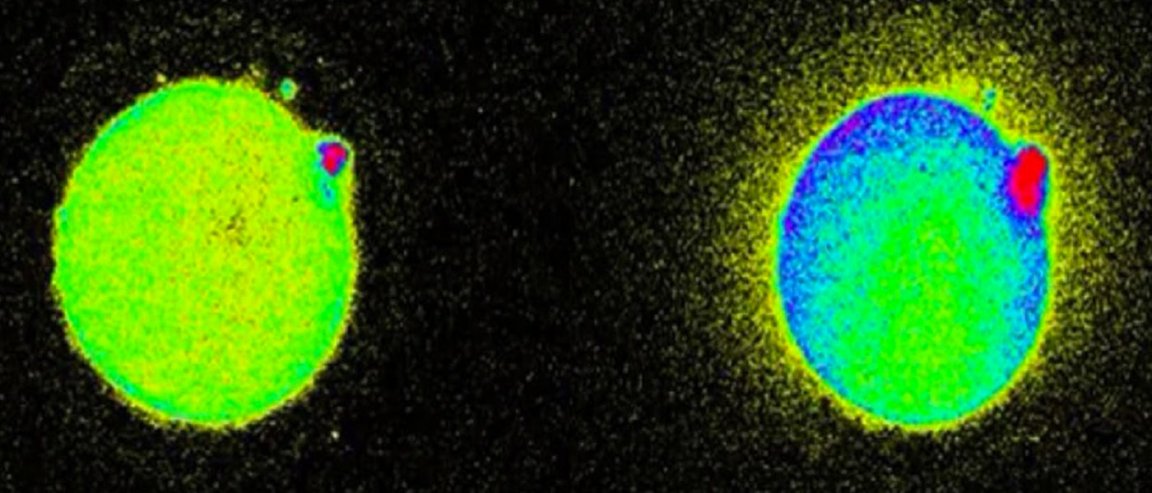
Life flashes
In 2011, a team from the Northeastern University discovered that egg cells from mice literally spark upon conception. They did not know any means that we had to film this event until 2014. And while US law states that it is illegal to fertilize a human egg cell with sperm for research purposes, they have found a way to replicate the event by using sperm enzymes without the actual sperm—and they have filmed it.
The egg cells apparently flash when pierced by sperm, as this triggers calcium levels to rise inside the egg, and prompts the release of zinc. The zinc then binds to molecules that emit a fluorescence which camera microscopes can pick up.
The zinc sparks continue like a symphony for about two hours from conception. “As the zinc shoots out, it binds to small molecules which emit a fluorescence, which can be picked up by camera microscopes,” states Sarah Knapton.
“We discovered the zinc spark just five years ago in the mouse, and to see the zinc radiate out in a burst from each human egg was breathtaking,” Teresa Woodruff, one of the researchers, adds.
So. Why Zinc?
Zinc is an important mineral that dictates the chances that the fertilized egg will grow into a healthy embryo. Researchers found that, in order to ensure the healthy development of an embryo, egg cells compartmentalize and distribute zinc, and release some of it to successfully navigate maturation, fertilization, and the start of embryogenesis.
The brighter the egg sparks in reaction to sperm enzyme, the more viable the egg.
“This is an important discovery because it may give us a non-invasive and easily visible way to assess the health of an egg and eventually an embryo before implantation,” asserts Eve Feinberg, who is also associated with the research. This would help minimize failed attempts at pregnancy and the emotional distress it causes by testing the viability of an egg before fertilization.
In short, in vitro fertilization will be much easier and have a higher chance of success.